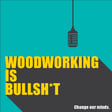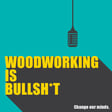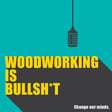
Episode 19 - The Master Series: NAKASHIMA
In today's episode of the Master Series, we discuss the amazing Japanese Americana furniture designer and architect, George Nakashima, widely considered to be the father of slab furniture. George believed trees had a soul, and through the act of making furniture he was giving them a second life. His most famous pieces of furniture include live edge slab tables and benches with architecturally inspired bases, with clean lines almost evoking the peace and serenity of Zen Buddhism. Following George's death in 1990, his daughter Mira boldly led Nakashima Woodworkers forward into their new chapter. Today, we have the incredible fortune of having two VERY SPECIAL guests with us, Mira Nakashima, daughter of George Nakashima, and her grandson Toshi Amagasu who not only give us an inside look into Nakashima Furniture, but also inside their thriving family legacy.
For more information on Nakashima Furniture: https://nakashimawoodworkers.com/
For a wonderful in-depth documentary on George's Life: https://nakashimadocumentary.com/ George Nakashima Video Clip courtesy of Jim Bunn, with assistance from John Nakashima.
To watch the YOUTUBE VIDEO of this episode and the irreverent & somewhat unpredictable AFTERSHOW, subscribe to our Patreon: http://patreon.com/user?u=91688467


